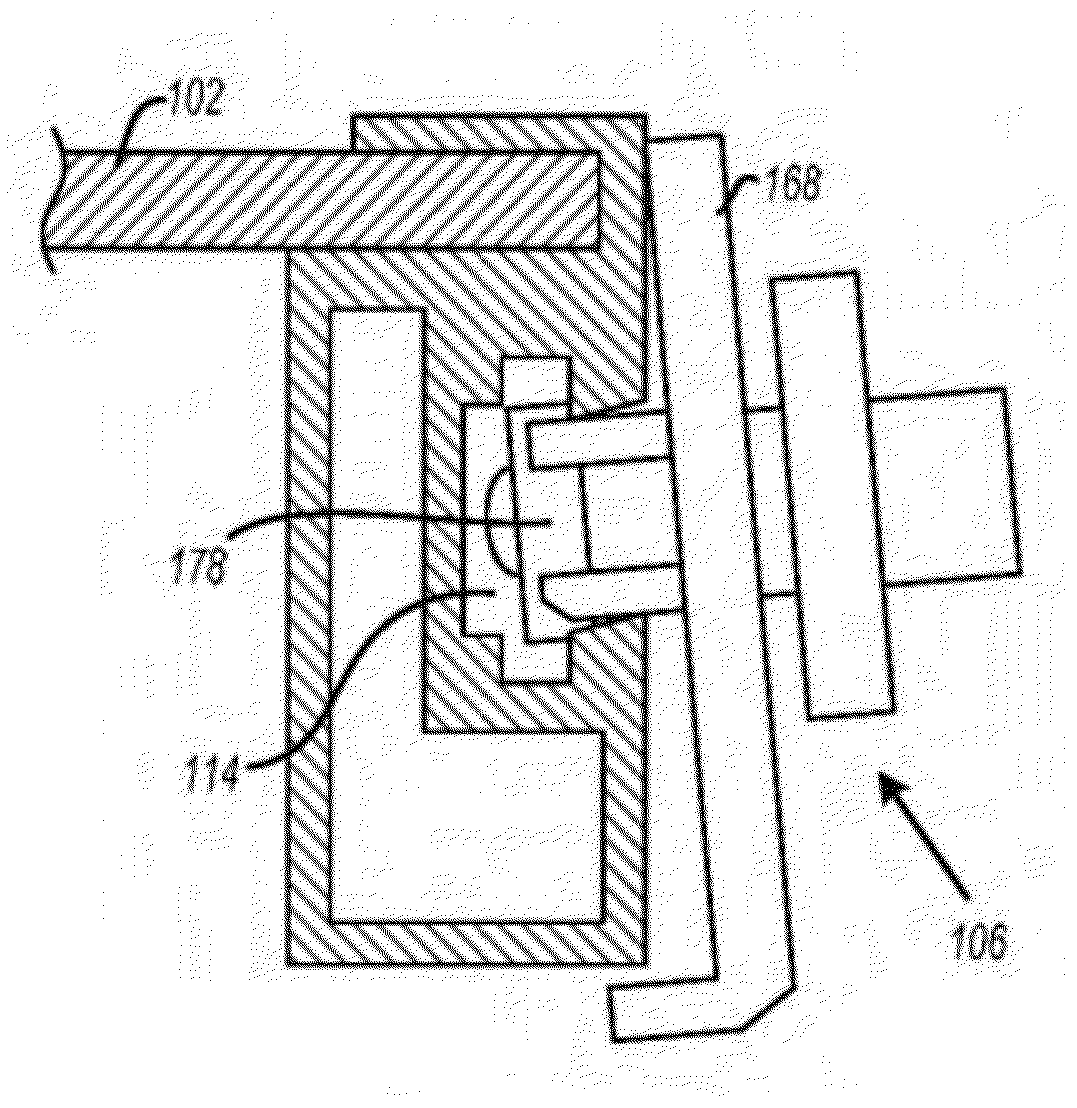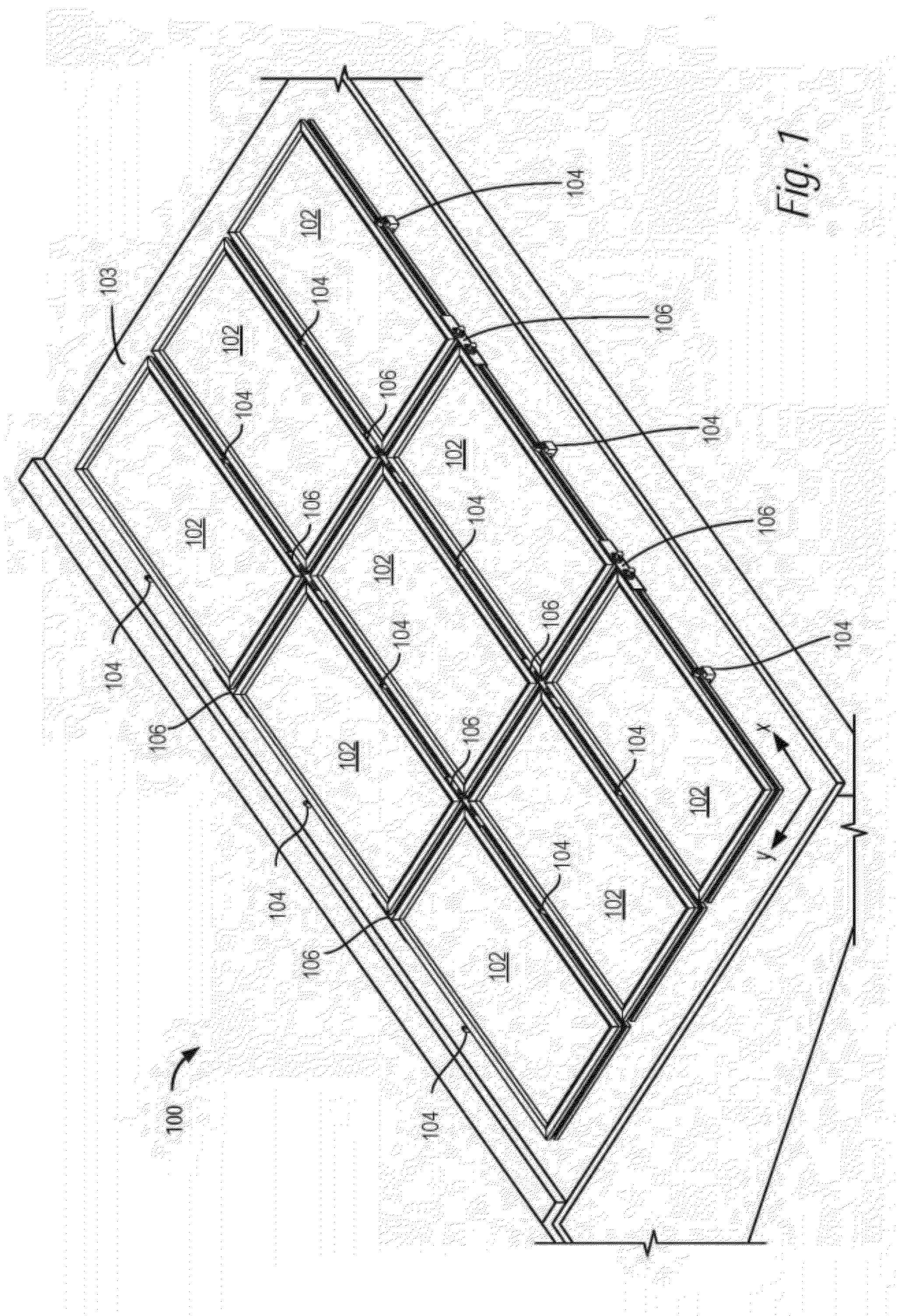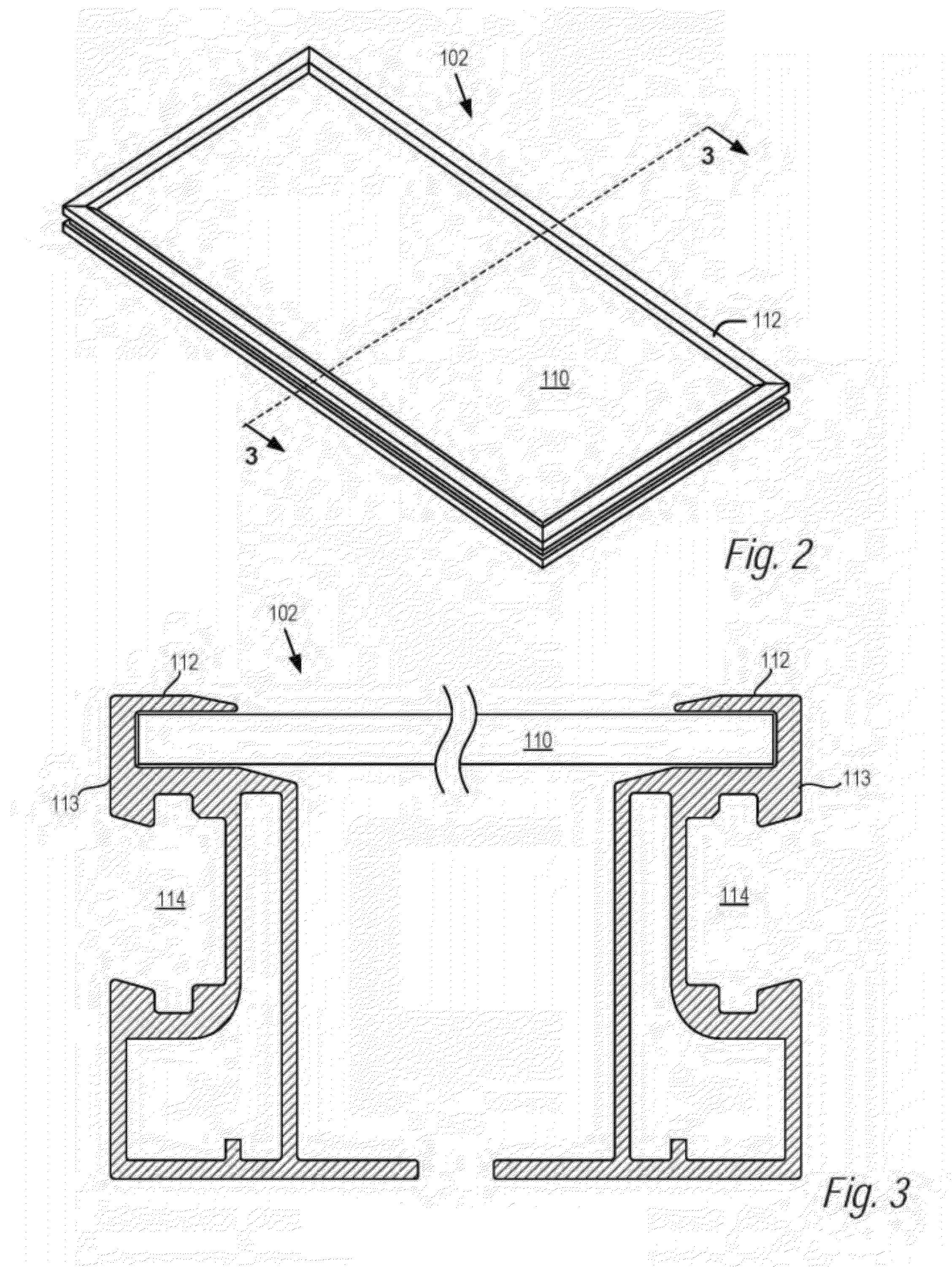Pivot-Fit Frame, System and Method for Photovoltaic Arrays
- Summary
- Abstract
- Description
- Claims
- Application Information
AI Technical Summary
Benefits of technology
Problems solved by technology
Method used
Image
Examples
Embodiment Construction
[0159]Referring now to FIG. 1, there is shown a perspective view of a PV array 100 including a plurality of PV modules 102 laid out in an x-y reference plane on a support structure 103. Mounting structure 103 is herein shown as including a planar surface, however it may be a structure with thickness, width, depth, and other dimension(s); in reference to any mounting structure, such as mounting structure 103, the height adjustment of a coupling described hereinafter is considered relative to any essential surface or essential plane, such as a top surface. The y-direction corresponds to the north-south dimension of the array, and the x-direction corresponds to the east-west direction. In the embodiment of FIG. 1, the reference plane is defined as being coextensive with a surface of the PV modules, when the PV modules are positioned in their final installed positions. However, in further embodiments, some of which are illustrated below, the reference plane may be above an upper surface...
PUM
 Login to View More
Login to View More Abstract
Description
Claims
Application Information
 Login to View More
Login to View More - R&D
- Intellectual Property
- Life Sciences
- Materials
- Tech Scout
- Unparalleled Data Quality
- Higher Quality Content
- 60% Fewer Hallucinations
Browse by: Latest US Patents, China's latest patents, Technical Efficacy Thesaurus, Application Domain, Technology Topic, Popular Technical Reports.
© 2025 PatSnap. All rights reserved.Legal|Privacy policy|Modern Slavery Act Transparency Statement|Sitemap|About US| Contact US: help@patsnap.com



